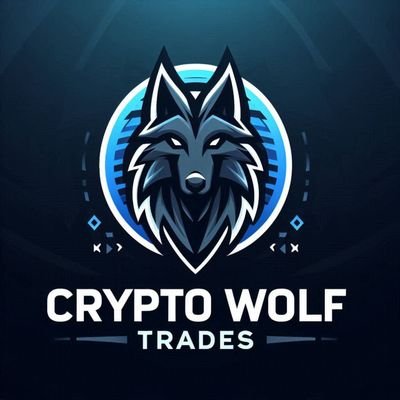
DOLA Borrowing Right 價格DBR
TWD
未上架
NT$2.67TWD
-3.50%1D
截至今日 08:21(UTC),DOLA Borrowing Right(DBR)的 新台幣 價格為 NT$2.67 TWD。
DOLA Borrowing Right價格走勢圖 (TWD/DBR)
最近更新時間 2025-08-02 08:21:06(UTC+0)
DBR/TWD 匯率換算器
DBR
TWD
1 DBR = 2.67 TWD,目前 1 DOLA Borrowing Right(DBR)兌換 TWD 的價格為 2.67。匯率即時更新,僅供參考。
在所有主流交易平台中,Bitget 提供最低的交易手續費。VIP 等級越高,費率越優惠。
今日DOLA Borrowing Right即時價格TWD
今日DOLA Borrowing Right即時價格為 NT$2.67 TWD,目前市值為 NT$0.00。過去 24 小時內,DOLA Borrowing Right價格跌幅為 3.50%,24 小時交易量為 NT$1.90M。DBR/TWD(DOLA Borrowing Right兌換TWD)兌換率即時更新。
1DOLA Borrowing Right的新台幣價值是多少?
截至目前,DOLA Borrowing Right(DBR)的 新台幣 價格為 NT$2.67 TWD。您現在可以用 1 DBR 兌換 NT$2.67,或用 NT$ 10 兌換 3.75 DBR。在過去 24 小時內,DBR 兌換 TWD 的最高價格為 NT$2.13 TWD,DBR 兌換 TWD 的最低價格為 NT$2.05 TWD。
您認為今天 DOLA Borrowing Right 價格會上漲還是下跌?
總票數:
上漲
0
下跌
0
投票數據每 24 小時更新一次。它反映了社群對 DOLA Borrowing Right 的價格趨勢預測,不應被視為投資建議。
DOLA Borrowing Right 市場資訊
價格表現(24 小時)
24 小時
24 小時最低價 NT$2.0524 小時最高價 NT$2.13
歷史最高價:
NT$6.36
漲跌幅(24 小時):
-3.50%
漲跌幅(7 日):
-0.57%
漲跌幅(1 年):
-7.45%
市值排名:
#4475
市值:
--
完全稀釋市值:
--
24 小時交易額:
NT$1,898,942.55
流通量:
-- DBR
最大發行量:
4.65M DBR
DOLA Borrowing Right (DBR) 簡介
關於DOLA借貸權代幣的詳解
隨著區塊鏈技術的發展,加密貨幣已經從早期的默默無名發展為全球最具影響力的金融工具之一。其中,DOLA借貸權代幣是其中一個重要的產品。
DOLA借貸權代幣的功能
DOLA借貸權代幣具有多種功能,主要是為用戶提供在區塊鏈大廳承認協議之一的多個金融服務。使用者可以藉由保證品來擔保並借款,從而進行不同的交易。
借貸權代幣
DOLA借貸權代幣通過自身特性使加密貨幣資產融資變得更加容易。用戶可以擔保其加密貨幣,並獲得相應數量的DOLA代幣作為借款,從而在不需要出售原有加密貨幣資產的前提下,進行多種金融操作。
綜上所述,DOLA借貸權代幣作為一種加密貨幣產品,已經在當前金融體系中扮演了重要的角色。透過獨特的借款機制,DOLA借貸權代幣讓用戶能更好地利用他們的加密貨幣資產,進行更豐富和全面的金融活動。
DOLA Borrowing Right 的 AI 分析報告
今日加密市場熱點查看報告
DOLA Borrowing Right價格歷史(TWD)
過去一年,DOLA Borrowing Right價格上漲了 -7.45%。在此期間,兌TWD 的最高價格為 NT$6.36,兌TWD 的最低價格為 NT$1.24。
時間漲跌幅(%) 最低價
最低價 最高價
最高價 
 最低價
最低價 最高價
最高價 
24h-3.50%NT$2.05NT$2.13
7d-0.57%NT$2.05NT$2.14
30d-14.33%NT$2.05NT$2.48
90d-35.34%NT$2.05NT$3.67
1y-7.45%NT$1.24NT$6.36
全部時間+58.36%NT$1.24(2024-09-12, 324 天前 )NT$6.36(2024-12-08, 237 天前 )
DOLA Borrowing Right的最高價格是多少?
DBR兌換TWD的歷史最高價(ATH)為 NT$6.36,發生於 2024-12-08。相較於價格回撤了 DOLA Borrowing Right。
DOLA Borrowing Right的最低價格是多少?
DBR兌換TWD的歷史最低價(ATL)為 NT$1.24,發生於 2024-09-12。相較於DBR歷史最低價,目前DBR價格上漲了 DOLA Borrowing Right。
DOLA Borrowing Right價格預測
什麼時候是購買 DBR 的好時機? 我現在應該買入還是賣出 DBR?
在決定買入還是賣出 DBR 時,您必須先考慮自己的交易策略。長期交易者和短期交易者的交易活動也會有所不同。Bitget DBR 技術分析 可以提供您交易參考。
根據 DBR 4 小時技術分析,交易訊號為 中立。
根據 DBR 1 日技術分析,交易訊號為 買入。
根據 DBR 1 週技術分析,交易訊號為 買入。
DBR 在 2026 的價格是多少?
根據DBR的歷史價格表現預測模型,預計DBR的價格將在 2026 達到 NT$2.64。
DBR 在 2031 的價格是多少?
2031,DBR的價格預計將上漲 -1.00%。 到 2031 底,預計DBR的價格將達到 NT$5.28,累計投資報酬率為 +95.59%。
熱門活動
全球DOLA Borrowing Right價格
目前DOLA Borrowing Right用其他貨幣計價是多少?最近更新時間:2025-08-02 08:21:06(UTC+0)
DBR 兌換 ARS
Argentine Peso
ARS$121.25DBR 兌換 CNYChinese Yuan
¥0.65DBR 兌換 RUBRussian Ruble
₽7.18DBR 兌換 USDUnited States Dollar
$0.09DBR 兌換 EUREuro
€0.08DBR 兌換 CADCanadian Dollar
C$0.12DBR 兌換 PKRPakistani Rupee
₨25.43DBR 兌換 SARSaudi Riyal
ر.س0.34DBR 兌換 INRIndian Rupee
₹7.83DBR 兌換 JPYJapanese Yen
¥13.32DBR 兌換 GBPBritish Pound Sterling
£0.07DBR 兌換 BRLBrazilian Real
R$0.5常見問題
DOLA Borrowing Right 的目前價格是多少?
DOLA Borrowing Right 的即時價格為 NT$2.67(DBR/TWD),目前市值為 NT$0 TWD。由於加密貨幣市場全天候不間斷交易,DOLA Borrowing Right 的價格經常波動。您可以在 Bitget 上查看 DOLA Borrowing Right 的市場價格及其歷史數據。
DOLA Borrowing Right 的 24 小時交易量是多少?
在最近 24 小時內,DOLA Borrowing Right 的交易量為 NT$1.90M。
DOLA Borrowing Right 的歷史最高價是多少?
DOLA Borrowing Right 的歷史最高價是 NT$6.36。這個歷史最高價是 DOLA Borrowing Right 自推出以來的最高價。
我可以在 Bitget 上購買 DOLA Borrowing Right 嗎?
可以,DOLA Borrowing Right 目前在 Bitget 的中心化交易平台上可用。如需更詳細的說明,請查看我們很有幫助的 如何購買 dola-borrowing-right 指南。
我可以透過投資 DOLA Borrowing Right 獲得穩定的收入嗎?
當然,Bitget 推出了一個 機器人交易平台,其提供智能交易機器人,可以自動執行您的交易,幫您賺取收益。
我在哪裡能以最低的費用購買 DOLA Borrowing Right?
Bitget提供行業領先的交易費用和市場深度,以確保交易者能够從投資中獲利。 您可通過 Bitget 交易所交易。
相關加密貨幣價格
Fartcoin 價格(TWD)Pi 價格(TWD)Toncoin 價格(TWD)Bonk 價格(TWD)Cardano 價格(TWD)Pepe 價格(TWD)Dogecoin 價格(TWD)Shiba Inu 價格(TWD)Terra 價格(TWD)Smooth Love Potion 價格(TWD)Kaspa 價格(TWD)dogwifhat 價格(TWD)Worldcoin 價格(TWD)Ethereum 價格(TWD)OFFICIAL TRUMP 價格(TWD)XRP 價格(TWD)Stellar 價格(TWD)Solana 價格(TWD)WINkLink 價格(TWD)Litecoin 價格(TWD)
在哪裡可以購買加密貨幣?
影片部分 - 快速認證、快速交易

如何在 Bitget 完成身分認證以防範詐騙
1. 登入您的 Bitget 帳戶。
2. 如果您是 Bitget 的新用戶,請觀看我們的教學,以了解如何建立帳戶。
3. 將滑鼠移到您的個人頭像上,點擊「未認證」,然後點擊「認證」。
4. 選擇您簽發的國家或地區和證件類型,然後根據指示進行操作。
5. 根據您的偏好,選擇「手機認證」或「電腦認證」。
6. 填寫您的詳細資訊,提交身分證影本,並拍攝一張自拍照。
7. 提交申請後,身分認證就完成了!
加密貨幣投資(包括透過 Bitget 線上購買 DOLA Borrowing Right)具有市場風險。Bitget 為您提供購買 DOLA Borrowing Right 的簡便方式,並且盡最大努力讓用戶充分了解我們在交易所提供的每種加密貨幣。但是,我們不對您購買 DOLA Borrowing Right 可能產生的結果負責。此頁面和其包含的任何資訊均不代表對任何特定加密貨幣的背書認可,任何價格數據均採集自公開互聯網,不被視為來自Bitget的買賣要約。
DBR/TWD 匯率換算器
DBR
TWD
1 DBR = 2.67 TWD,目前 1 DOLA Borrowing Right(DBR)兌換 TWD 的價格為 2.67。匯率即時更新,僅供參考。
在所有主流交易平台中,Bitget 提供最低的交易手續費。VIP 等級越高,費率越優惠。
DBR 資料來源
Bitget 觀點

gum
12小時前
deBridge has already bought 1.5% of the total $DBR supply
100% of their DAO revenue goes to buying back their token from the open markets, which is one of the best Team & Community alignment stories so far - especially since there's real revenue pouring in every day, it's not just a marketing gimmick
Good team > Useful product that attends to user needs > Growth > Revenue > Token Buybacks
It's a winning formula to look at when studying protocols
DBR+0.88%
DAO+2.25%

ashen @ nyc
16小時前
Was looking into tokens that had thick buybacks in July and found some cool ones
BONK - 50% of letsBonk revenue goes to Buy/Burn
+ $23M worth in July (my god, pump is cooked)
DBR - Just announced their Reserve Fund with 100% rev for buybacks
+ $4M acquired in June (1.5% of supply)
Token buybacks are usually a double-edged sword because the amount that they buyback is directly proportional to how successful the protocol is
So, when you have three really good protocols like deBridge + Bonk, you have really good buyback programs
DBR+0.88%
BONK+1.64%

Crypto Wolf Trades_
2天前
$ZOO will start exploding hard once market settles down a bit 💣💣
Will soon clear 0.00000430 for unstoppable pump 📈🚀
$insp $zora $dolo $rekt $dbr $giza $csky $troll $navx $omni $bifi $glm $asr $fis
DBR+0.88%
NAVX+2.19%

Crypto Wolf Trades_
2天前
New killer gem 💎 is coming soon
Sitting rock bottom. Fully strong one
Must hold for 2X or more gains🚀
Turn on notifications 🔔
30Likes & 15Rt before sharing ♻️
$insp $zora $dolo $rekt $dbr $giza $csky $troll $navx $omni $bifi $glm $asr $fis
DBR+0.88%
NAVX+2.19%

BGUSER-KWNV3VCX
4天前
$CROSS down trend coming soon ..
tp=0.20
everyone sell $CROSS $CROSS
$CEC $NEIROETH $BONK $TURBO $DOGS $BANK $DBR
NEIROETH-1.31%
SOON+0.59%
Bitget 平台新上架幣種的價格








